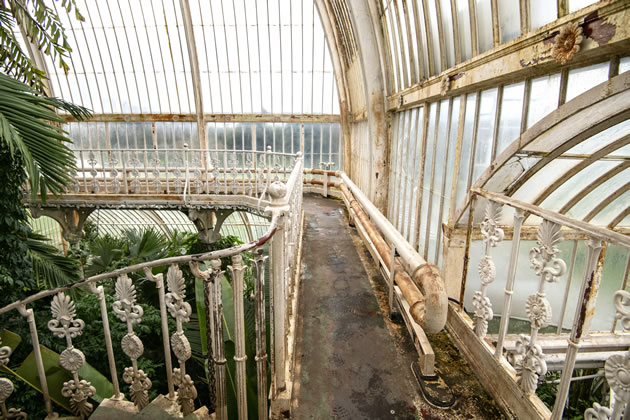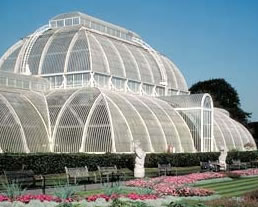Kew Garden's Palm House to Close for Up to Five Years
£60million renovation will see it reopen as a net-zero glasshouse
 Palm House balcony rust, Kew Gardens. Picture: Jeff Eden/RBG Kew
Palm House balcony rust, Kew Gardens. Picture: Jeff Eden/RBG Kew
July 17, 2025
Kew Gardens’ iconic Palm House is set to shut for five years in a huge £60million renovation project. The Victorian glasshouse, which sits at the heart of the world-famous botanic gardens, provides an indoor rainforest environment to protect some of the world’s rarest and most threatened plants, but it is showing serious signs of deterioration.
Kew warned that without urgent works, the building and plants it protects risk being lost forever. The landmark renovation project will also see the Grade I listed Palm House and Grade II listed Waterlily House, a small glasshouse which sits next to it, turned into the world’s first net-zero glasshouses of their kind.
Plants are already being moved into two new glasshouses, one permanent and the other temporary, to allow the project to go ahead. The renovation is expected to last four to five years from 2027.
A planning application for the project has been submitted to Richmond Council, who will make a final decision before it can get underway.
The makeover will involve replacing 16,500 glass planes with sealed glazing units, using bespoke silicone seals to cut heat loss and moving to fully electrified air and water source heat pumps. Original materials and finishes in the glasshouses will be conserved, while they will be made fully accessible to reach more visitors.
Palm House opened in 1848 and is home to a variety of tropical plants, totalling 1,300 plants, some of which are endangered or even extinct in the wild. Waterlily House was completed in 1852 to showcase the world’s biggest waterlily, and it is now full of aquatic plants and tropical fruit.
Richard Deverell, director of RBG Kew, said, “This is a pivotal moment in the history of Kew. With sustainability at the core of our mission, this project exemplifies our commitment to safeguarding both the environment and cultural heritage. The transformation of the Palm House and Waterlily House into net-zero icons will not only protect irreplaceable plants but serve as a beacon of what sustainable heritage can achieve.”
Kew warned the complex project will involve balancing the often contradictory needs of horticulturists, engineers and architects, which has not been tried for buildings of this kind before. The redevelopment is being led by the site’s capital projects team, Hugh Broughton Architects and Cundall engineers.

Palm House, Kew Gardens. Picture: Jeff Eden/RBG Kew
Tom Pickering, head of glasshouse collections at RBG Kew, said, “At the heart of this project is the need to protect the extraordinary plant collections housed in the Palm House and Waterlily House. Besides being beautiful, many have cultural, scientific and conservation value, and replacing these collections is unimaginable. Achieving net zero in these historic buildings is an unprecedented task, it’s a complex challenge which must consider the interplay of horticulture, climatic control, engineering, and architecture.”
The organisation is making changes to the way it operates as part of its 10-year corporate strategy, which was published in 2021. Its priority is to become climate positive by 2030, setting a science-based carbon emissions reduction target.
Hugh Broughton, of Hugh Broughton Architects, added, “The Palm House and Waterlily House at Kew Gardens are instantly recognisable icons of Victorian innovation. This exciting project will help to conserve and decarbonise these inspiring glasshouses and make them more accessible to a wider audience. The design elegantly reflects Kew’s ambitious Climate Positive 2030 strategy, reminding us of the fragility of the rainforests and our role in their protection.”
Charlotte Lillywhite - Local Democracy Reporter